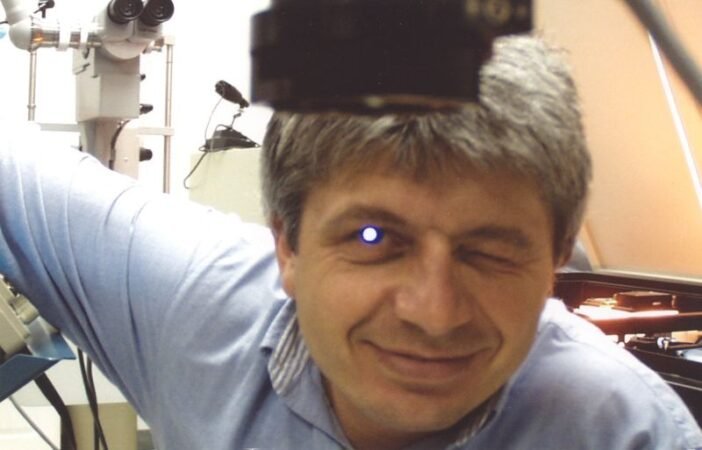Essential Insights
-
A laser accident at the University of Michigan in 1993 inadvertently initiated the development of bladeless LASIK, revolutionizing corrective eye surgery and benefiting over 30 million people globally.
-
The femtosecond laser technology, distinguished by its ultra-quick light pulses, was further developed by a team led by Tibor Juhasz and Gerard Mourou, leading to the founding of IntraLase Corp. and the commercial success of LASIK surgery.
-
Federal support, particularly from the National Science Foundation, played a crucial role in the research funding and transition of laser technology into practical applications, resulting in the establishment of an entire industry around laser-assisted eye surgeries.
- Ongoing research continues to explore new medical applications for femtosecond lasers, such as cataract and glaucoma treatment, demonstrating the long-term impact of foundational scientific discoveries on healthcare innovations.
Invention often springs from unexpected moments of creativity, and LASIK eye surgery exemplifies this principle perfectly. A mere laboratory accident involving a femtosecond laser over three decades ago paved the way for a revolutionary medical procedure. This technology has since helped over 30 million people regain their sight.
The story originates at the University of Michigan, where a graduate student accidentally injured his eye during laser experiments. Rather than merely being a setback, this incident sparked collaboration among scientists, ultimately leading to the development of bladeless LASIK. Using a femtosecond laser, surgeons can reshape the cornea with precision, enhancing vision safely and painlessly. This innovation significantly shortened recovery times for patients compared to traditional blade surgeries.
Federal support played a crucial role in turning a scientific breakthrough into a widely adopted medical practice. The National Science Foundation (NSF), along with other agencies like the National Institutes of Health, catalyzed research that transformed basic science into practical applications. This collaboration among physicists, engineers, and medical professionals set the stage for significant advancements.
Tibor Juhasz, who worked on this technology, co-founded IntraLase Corp. in 1997 to commercialize bladeless LASIK. Despite initial challenges in garnering support from venture capitalists wary of past failures in ophthalmic technologies, the NSF’s backing established credibility. This endorsement helped launch LASIK into the mainstream, especially after studies showed its advantages over traditional procedures. The military’s endorsement of LASIK for pilots further validated its efficacy and accelerated growth.
Today, LASIK has become synonymous with corrective eye surgery. Its success has spawned jobs and led to further innovations, such as femtosecond laser cataract surgery. This evolution demonstrates the transformative potential of foundational science, which founders of various startups continue to explore. Companies inspired by this technology are working on treating conditions like glaucoma, illustrating the ongoing impact of the original research.
The journey from a laboratory accident to a highly regarded medical procedure illustrates the importance of investing in research. Such investments foster an environment where innovation can thrive and directly benefit society. As we look to the future, the possibilities of femtosecond laser technology continue to expand, promising even more advancements in ophthalmic care and beyond.
The success of LASIK surgery signifies not just a medical breakthrough but a testament to what can happen when research receives the support it needs. By fostering collaborative, interdisciplinary efforts, we can continue to turn life-changing innovations into reality. This story serves as a reminder of the profound impact that science, ingenuity, and investment can have on everyday lives, shaping the human journey toward improved health and vision.
Stay Ahead with the Latest Tech Trends
Dive deeper into the world of Cryptocurrency and its impact on global finance.
Discover archived knowledge and digital history on the Internet Archive.
TechV1

